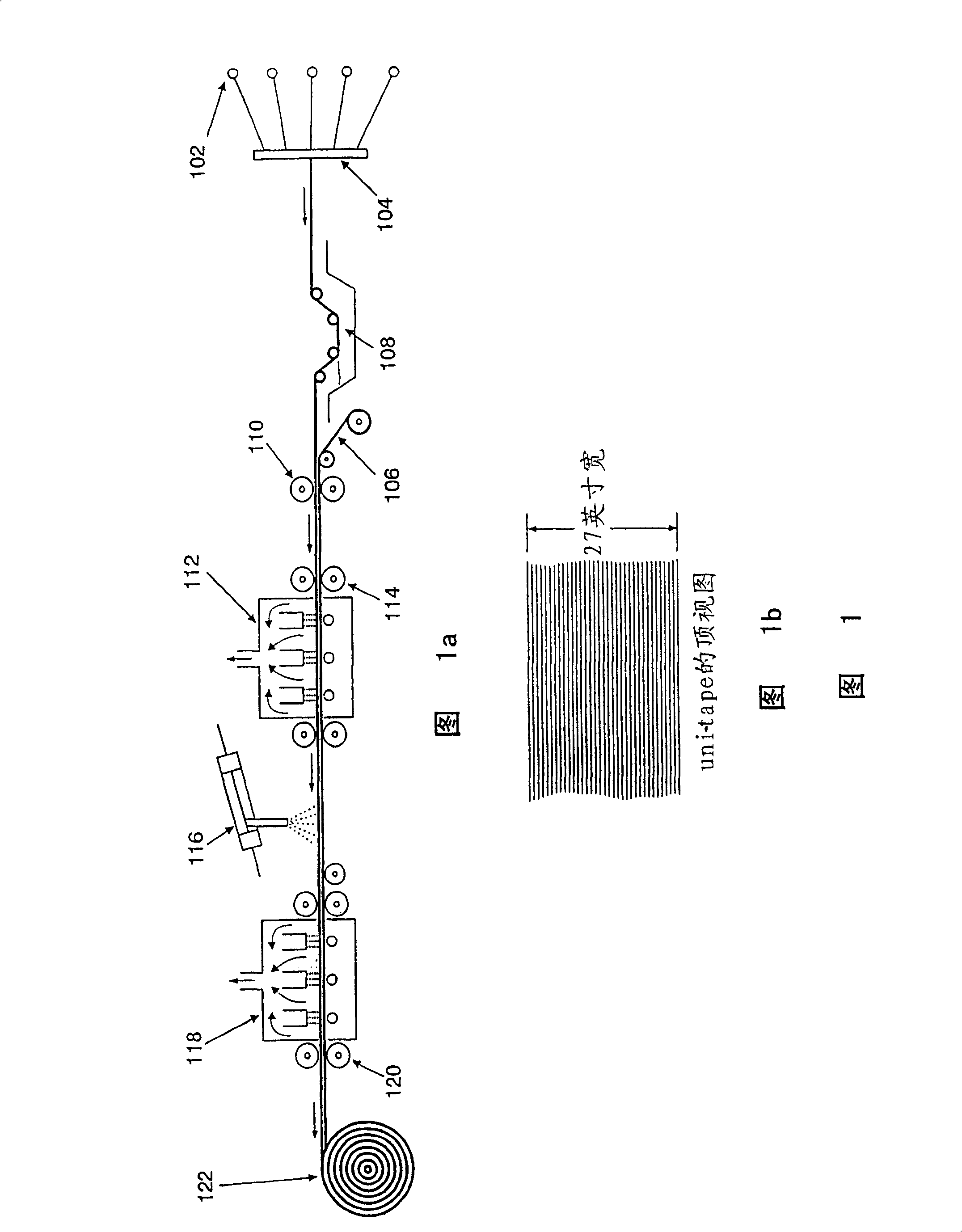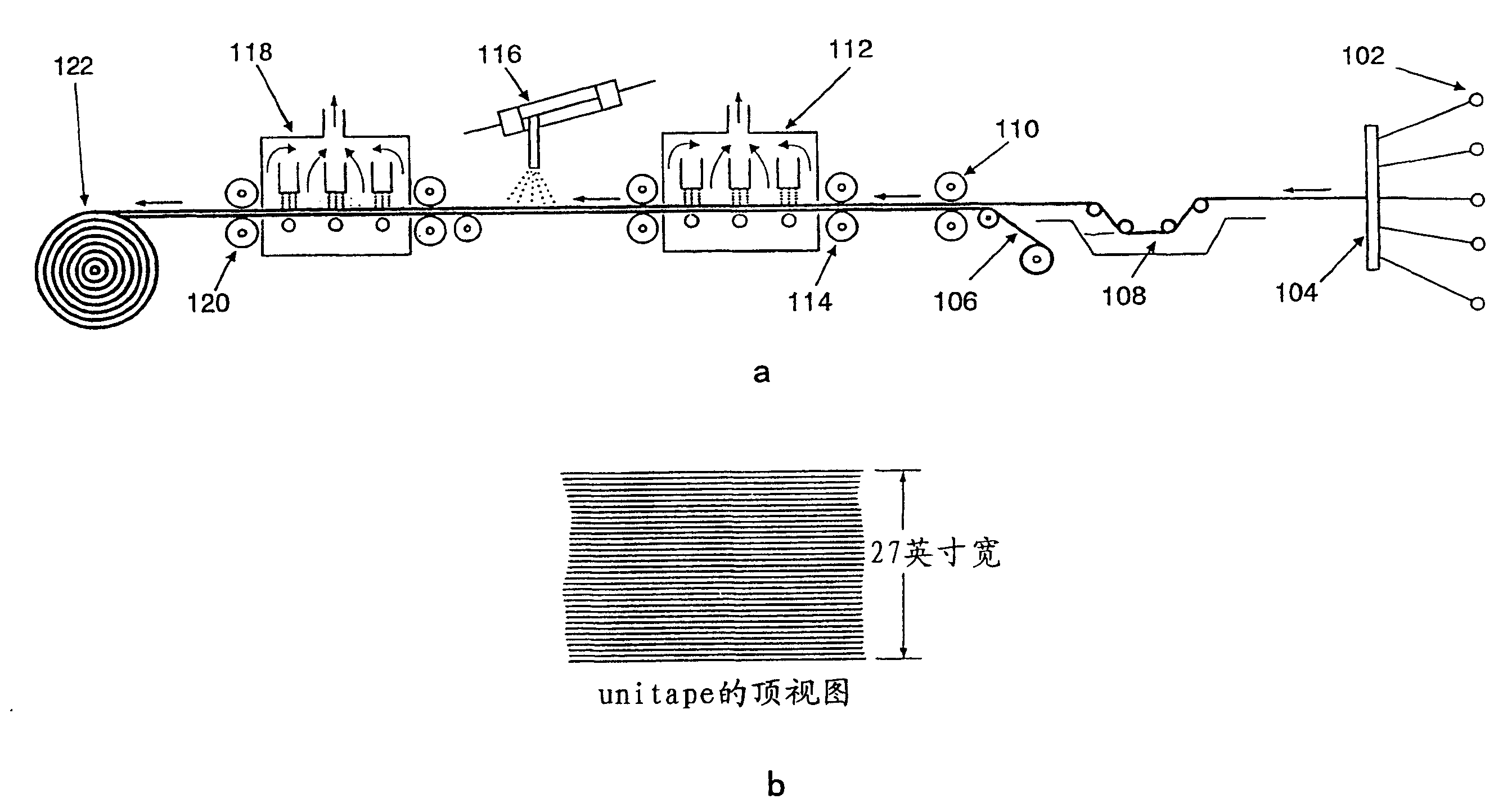Impact resistant rigid composite and method of manufacture
A composite material and impact-resistant technology, applied in chemical instruments and methods, thin material handling, transportation and packaging, etc., can solve problems such as frequent production failures and interruptions, avoid sticking problems, improve manufacturing efficiency and economical effects
- Summary
- Abstract
- Description
- Claims
- Application Information
AI Technical Summary
Problems solved by technology
Method used
Image
Examples
Embodiment 1
[0059] Honeywell International Corporation under the trade name 225 1100 denier extended chain polyethylene yarns produced were fed from a creel to the impregnation process shown in FIG. 1 . The yarns were spread, straightened, and placed on a silicone-coated release paper. A matrix solution consisting of 5000 parts resin solution and 35 parts catalyst was applied to the uniaxial web. This resin solution, available from Dow Chemical Company, consisted of 64 wt% vinyl ester resin, 3 wt% diallyl phthalate, and 33 wt% methyl ethyl ketone. The catalyst was 2,5-dimethyl-2,5-bis(2-ethylhexanoylperoxy)hexane from Elf Atochem. The web is passed under a nip roll to spread the matrix solution and force the solution through and between the filaments of the yarns. The solvent in the matrix was allowed to dry by passing the web through a first oven at a temperature of 82°C. An elastomer solution (trade name available from 3M Company) was evenly sprayed onto the fiber web as discrete...
Embodiment 2
[0063] Embodiment 2 (comparison)
[0064] Continuous unitape rolls were produced as in Example 1 except that no elastomer was used, but other materials and conditions were all the same. The composition of the unitape was 81 wt% fiber and 19 wt% matrix. The first and second rolls of unitape were loaded onto the same bias ply machine as in Example 1.
[0065] Attempts at the unitape skew were made at consolidation temperatures ranging from room temperature up to 116°C. At lower temperatures, the unitape still adhered to the release paper and the weft and warp layers did not adhere to each other. Increasing the pressure between the layers did not improve adhesion. At 116°C, the matrix in the unitape became very soft and sticky. However, the adhesion between the layers was not greater than the adhesion of the unitape to the release paper. A number of temperatures were tried between 38°C and 116°C to confirm that the material would stick high enough to form a bias ply and ha...
Embodiment 3
[0070] For the composites of Example 1 and (comparative) Example 2, ballistic performance was tested as previously described. The result is as follows:
[0071] Example 1
[0072] It can be seen that the specific energy absorption (SEAC) of the composite material of the present invention exceeds that of the prior art material by 13.8%.
PUM
| Property | Measurement | Unit |
|---|---|---|
| melting point | aaaaa | aaaaa |
| modulus | aaaaa | aaaaa |
| glass transition temperature | aaaaa | aaaaa |
Abstract
Description
Claims
Application Information
 Login to View More
Login to View More - R&D Engineer
- R&D Manager
- IP Professional
- Industry Leading Data Capabilities
- Powerful AI technology
- Patent DNA Extraction
Browse by: Latest US Patents, China's latest patents, Technical Efficacy Thesaurus, Application Domain, Technology Topic, Popular Technical Reports.
© 2024 PatSnap. All rights reserved.Legal|Privacy policy|Modern Slavery Act Transparency Statement|Sitemap|About US| Contact US: help@patsnap.com










